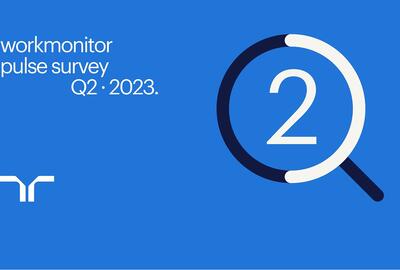This article was originally published here on the Forbes website. This is a repost of Sander’s regular column.
More than three years since the pandemic altered the fabric of the world of work, organizations continue to struggle with talent scarcity, especially for non-office workers across a wide swath of industries. A new social contract with employers, evolved job expectations and a significantly different labor market have led many people to reprioritize what’s important in their lives and careers.
One top-of-mind consideration for blue- and gray-collar workers is job flexibility, a topic that until recently has been the domain of white-collar professionals. Many companies leverage remote working, hybrid schedules and flexible hours as ways to attract and retain office workers, but non-office workers are less likely to enjoy such accommodation due to the nature of their jobs. And while many have tempered their expectations for greater flexibility, they nevertheless harbor the same desire for it as their white-collar counterparts, new research shows.
Randstad defines gray-collar roles as those providing a service or are customer-facing but not based in an office, i.e., airline pilots, police officers or teachers. Blue-collar workers perform high- and low-skilled manual labor in industries such as agriculture, manufacturing, construction, mining or maintenance.
Randstad’s second-quarter 2023 Workmonitor Pulse Survey — which gauged the sentiments of more than 7,500 workers in five markets around the world — found that two fifths of blue-collar workers (42%) and close to half of gray-collar workers (48%) consider job flexibility as or more important than pay, a portion nearly as high as white-collar counterparts (54%). Furthermore, a plurality of non-office workers — nearly two in five — believe their jobs can be flexible but their employers aren’t trying hard enough to accommodate their needs.
an important benefit for all workers
Job flexibility has been a point of contention at many workplaces since the start of the pandemic. On-site talent such as production personnel, frontline professionals and others didn’t have the luxury of working remotely even as many colleagues from other parts of their business were able to do so. Randstad’s data shows, however, that non-office workers believe their employers can provide greater flexibility — if not through remote working than from flexible working hours.
Blue- and gray-collar workers prioritize flexibility in terms of work schedules (28% and 30% respectively) and number of hours worked (28% and 30% respectively), while white-collar talent prioritize flexibility in terms of location (50%).
The onset of the Great Renegotiation highlighted talent’s desire for more than a paycheck, and even now workers continue to leave their jobs in large numbers. For example, there were 3.9 million quits in the U.S. as of January, compared with 3.5 million in February 2020, the month before the pandemic.

two fifths of blue-collar workers (42%) and close to half of gray-collar workers (48%) consider job flexibility as or more important than pay, a portion nearly as high as white-collar counterparts (54%).
here’s how to accommodate worker needs
Creating equity at work requires active listening and a commitment to seek to understand, avoid assumptions and encourage dialogue within the organization. Root cause analysis on equity can help leaders to understand the source of any potential issues — from skills gaps to evidence of unconscious bias — and remove barriers for further participation.
The next step for business leaders looking to refine their workplace culture is to define a common goal and create a measurable action plan to reach more equitable outcomes.
For employers, providing flexibility in an equitable way for blue- and gray-collar workers will have a positive business impact. Businesses need to adopt flexibility with intentionality within their strategies, which means understanding that flexibility means different things to different people.
Doing so will help strengthen their ability to attract and retain people in today’s highly competitive environment. Consider these three practical ways to meet talent’s expectations:
- Redefine work for non-office workers into activities that can be performed off-site and outside of normal business hours. This allows companies to provide the flexibility their workers desire, even in roles that traditionally haven’t offered this benefit.
- Consider offering more support to employees who need flexibility to tend to personal obligations. Randstad’s research revealed that around 30% of blue- and gray-collar workers say they need job flexibility to care for family members. Providing on-site child care or stipends to pay caregivers would help address this need.
- Expand wellness benefits that alleviate stress and fatigue. Nearly half (45%) of non-office workers would like flexible schedules so they can get healthy or fit. Offering on-site fitness facilities or time throughout the workday for exercise breaks could go a long way toward creating a healthier and more productive workforce.
Providing job flexibility is complex, but continued digitalization of the world of work offers people easier ways to control their own destiny. Self-scheduling tools, for example, are empowering. In workplaces where Randstad has introduced this technology, hourly workers and their employers have enthusiastically embraced such innovation.

Businesses need to adopt flexibility with intentionality within their strategies, which means understanding that flexibility means different things to different people.
In a post-pandemic world of work, the global workforce is clearly seeking jobs that fit around people’s lives rather than the other way around. By considering unique ways to fulfill their employees’ desire for greater flexibility, organizations are better positioned to overcome the challenges of talent scarcity for many years to come.



